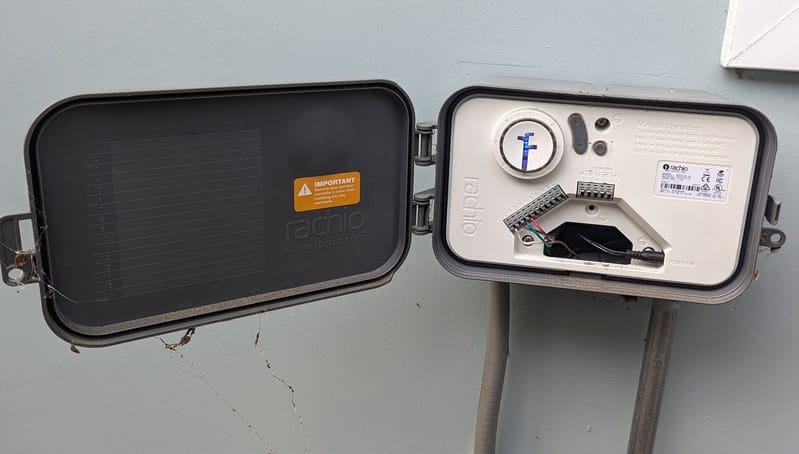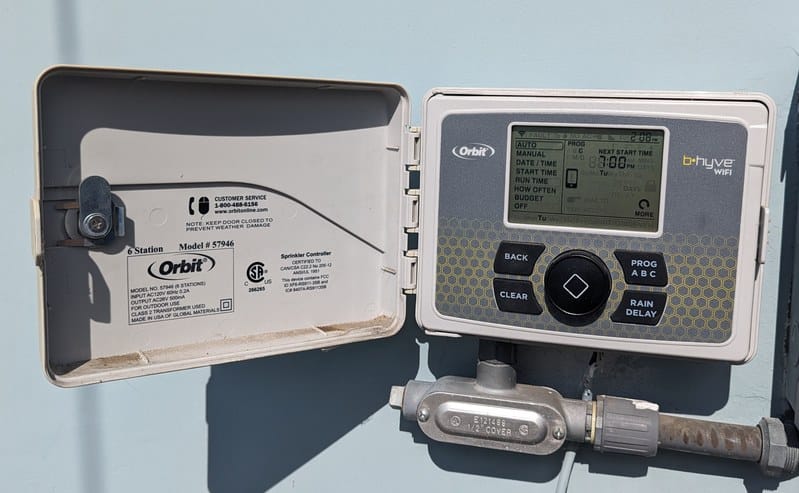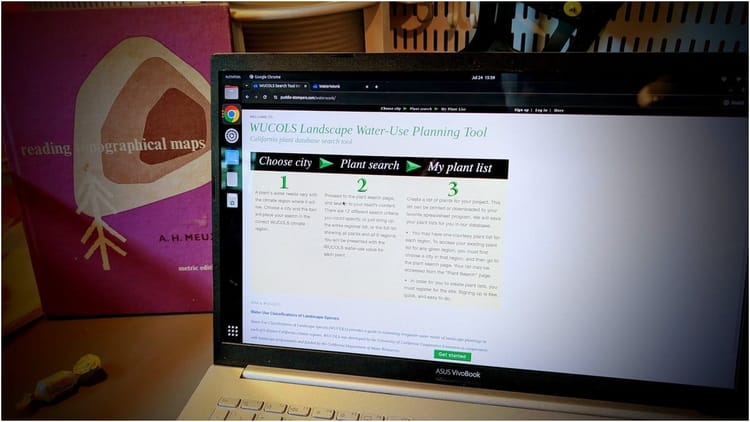Smart Irrigation Controllers

If you have a sprinkler and/or drip irrigation system in your garden, you will usually have a controller that manages the watering schedule. Traditionally, these controllers worked similarly to our home's heating/cooling thermostats where you program a schedule for the device to follow. Today, we now have smart thermostats that can manage temperatures in the home automatically, negating the need to create a manual program.
Irrigation controllers are also available as smart devices, which can be very helpful if you are unsure how to create an effective schedule for your garden's irrigation. You can simply tell the controller what type of plants you have, and how much sun and slope there is, and it will automatically create and adjust a schedule for you. These smart controllers will also prevent unnecessary water use by reacting to weather forecasts and delaying irrigation when wind, rain or freezing conditions are expected. If hot and dry weather is in the forecast, they will water more and will automatically adjust irrigation schedules based on the change of seasons (e.g. watering for longer in the Summer). In addition to responding to weather events, they can keep track of soil saturation and delay watering when they calculate that the soil is so wet that additional water is not required.
Smart Irrigation Controllers are more expensive than conventional timers. A simple timer can be found for less than $30 in Home Depot, but the cheapest smart controller will cost $120. If you live in an area where droughts are common, you can often receive rebates on the purchase of a smart irrigation controller to help relieve the higher cost.
Which Smart Controller Should I Use?
There are many brands available in the market that offer smart irrigation controllers. However, in my experience, the most commonly offered devices in garden stores are the Rachio and Orbit B-hyve controllers. I have used both of these devices at home and on clients' sites, and each has pros and cons that distinguish it from the other.
Rachio Controllers

Rachio devices are very slick and modern-looking. Rachio controllers are my preferred device because the automatic scheduling is very accurate and I have never had any issues with its performance. The controller is completely controlled via a phone app which communicates to the controller over the internet, as long as the device is connected to your home WiFi. The app is very easy to use and I like that you can either have a completely automated schedule, a manual schedule, or a hybrid where the schedule is manually set up but tweaked by the algorithm over time. Even when using a completely manual schedule, you can still have the controller react to weather and delay watering when necessary.
The only issue with Rachio devices is that you must use the app to program and change your irrigation schedule. From the device itself, you can manually turn on valves for a few minutes but that is only intended to allow you to test the device during installation. Rachio controllers will have a memory of the schedule and continue to run when not connected to the internet but you cannot make any changes or set it up without the device connected to WiFi. This means that Rachio devices are not the best choice if you have a lawn service that maintains your irrigation system, or for use on a rental property.
Orbit B-hyve Controllers

Unlike Rachio, Orbit is a well-established irrigation device manufacturer with a long history. After Rachio got a strong foothold in the market, they released their smart controller range called B-hyve. I have one of their B-hyve devices controlling my back garden, and a Rachio controlling my front garden at home, and have been able to compare their effectiveness.
My observation is that the B-hyve algorithm is not as robust as Rachio's system. It seems as though B-hyve only really makes adjustments based on seasonal data, rather than reacting to local conditions. I see this often when we have Winter heatwaves in Southern California, caused by dry desert winds that can desiccate local plants. The B-hyve is controlling my lawn irrigation and I have seen it completely ignore hot and dry conditions at that time of year and only water sparingly while my lawn is going brown. In these instances, I have had to activate it manually to prevent the lawn from completely drying out. You also have no control over the weather station used for forecasts, whereas the Rachio device gives you a choice or even lets you use your own weather station.
The one advantage it has over Rachio, however, is that it has a screen on the device that allows you to program and manage schedules directly on the controller itself, which is very useful if you have a gardener who manages this for you. While some gardeners may be comfortable, I have found that many don't like using apps to control the devices and if you are using a large lawn care company you may not get the same gardener at your home for each visit. Making changes on the device's screen will work even if it is not connected to WiFi, however, without an internet connection it cannot react to rain events. You can install a rain sensor so if you want to use one of these devices without connecting to WiFi it is a lot more feasible than with Rachio. Note that a rain sensor will only prevent watering during or after a rain event, but cannot forecast weather to prevent watering before rain.
In summary, I would recommend Rachio controllers in almost every instance, however, if you have an old-fashioned lawn service or are using the device at a rental property, B-hyve may be the better choice.
The other advantage to Rachio controllers is that they have a loyal following and there are numerous forums online to get advice on troubleshooting or help setting up, and the company itself is very responsive to customer queries.
Both devices can be integrated with smart home systems like Amazon Alexa or Google Home to control via voice commands. While this is a nice feature, I have never really found any use for that, but if you have pests invading your lawn it could be handy for turning on your sprinklers to chase them away I suppose.
In terms of cost, Orbit devices tend to be cheaper. Currently, the 6-zone version is selling for $118, and that includes a weatherproof box. The cheapest Rachio device (4 zones) sells for $149, but you will need to pay another $40 for a weatherproof box.
Unless you want to hard-wire the electrical supply, both devices can be easily installed by anyone with some DIY skills.





